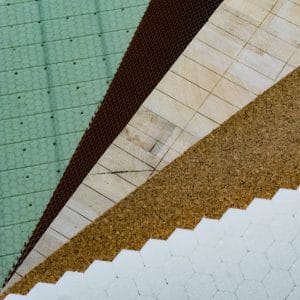Different support materials are used in the manufacture of sandwich components, depending on the requirements. In order to achieve the highest possible efficiency, these should be able to be processed in a single-stage process.Closed-cell foams made of PET, PMI or PVC are most commonly used. These can be used particularly well in the closed RTM and vacuum infusion processes and enable structural components with an extremely low dead weight. Foams can be used as plate or film blanks or as milled cores. Through the use of foams, particularly damage-tolerant structures can be produced which, if required, also meet high fire protection requirements. In addition, foams can be provided with reinforcing fibres introduced perpendicular to the surface so that a three-dimensional composite structure is created by impregnating the fibres.
To improve surfaces or relatively thin sandwich constructions, we use volumized nonwovens, which are characterized above all by low flow resistance in the above processes. The intermediate layer absorbs resin and can therefore be used as a flow medium. Lower material prices and easy processability lead to high cost-effectiveness, especially with larger quantities.
Natural materials such as cork and balsa wood can also be used as support materials in sandwich constructions. Of particular interest here are the high damping values, through which the vibration behavior of components can be specifically influenced and improved. Balsa wood cores can be used, for example, to produce particularly rigid structures.
Honeycomb cores made of composite or aluminium are used for extremely light structures. In a multi-stage process, the top layers of the sandwich must first be produced separately and then glued to the core material in a further work step.

